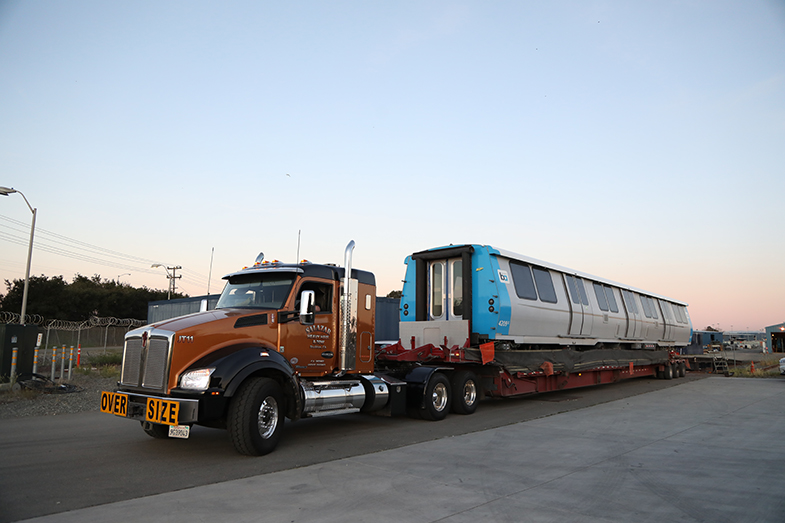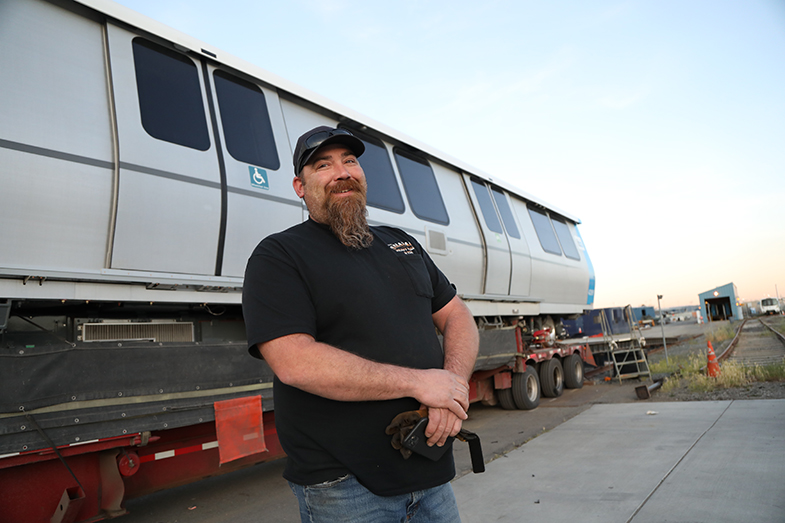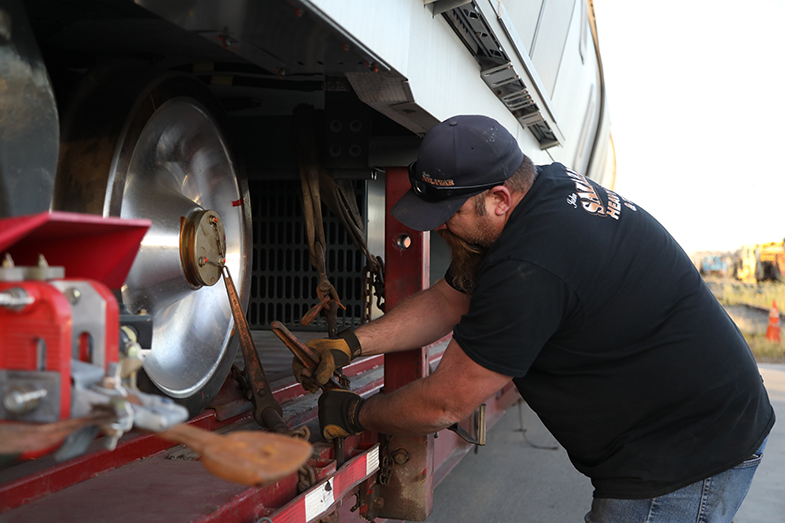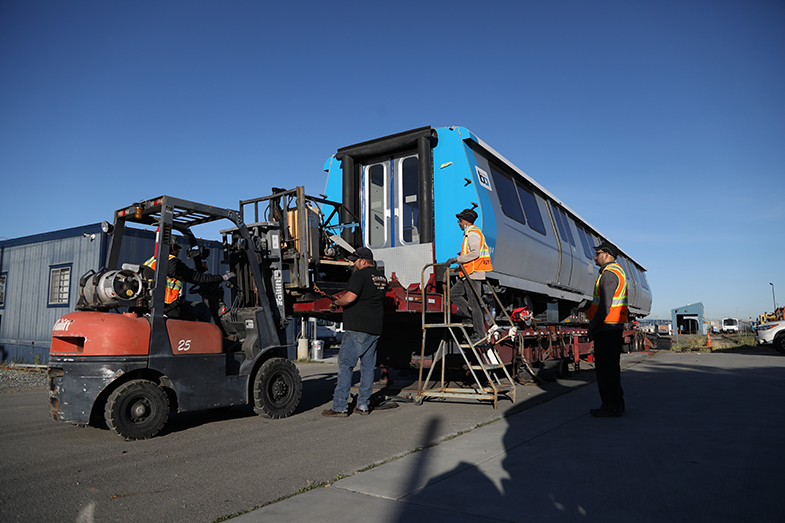What it takes to deliver BART’s Fleet of the Future cars

The rising sun sits just below the horizon, the sky still dark, as Jeromie Salazar pulls into BART’s Hayward Test Track. He turns with caution, as he’s driving a 126,000-pound, 100-foot-long semi-truck with a brand new Fleet of the Future car secured carefully atop. In one swift motion, Salazar neatly aligns the back edge of his truck with the test track ramp and cuts the engine.
“I hit it on the first shot!” he exclaims.
It’s just after 6 a.m., and Salazar has been up and working since 1. From his home near South Sacramento, Salazar trekked to the Bombardier Transportation manufacturing plant in Pittsburg to pick up the train car.
When Salazar arrives, the car is nearly ready to go; the previous night, workers at Bombardier, the manufacturer of BART’s Fleet of the Future, lowered the massive car by crane onto Salazar’s flatbed and secured it with a series of cables. From there, it’s up to Salazar to get the car safely – no bumps or scratches allowed – to the Hayward Test Track, where it will undergo extensive testing.

It takes about a month for a newly delivered car to enter regular service, said John Garnham, BART Group Manager Rail Vehicle of New Car Procurement. The team at the test track conducts full dynamic testing to “verify there were no problems with the car coming off the truck,” Garnham said.
The lights, the doors, the brakes, and the propulsion are checked, as is the car’s Automatic Train Control system. The engineers then send the test results to BART engineering and program management before forwarding them to the California Public Utilities Commission, which authorizes BART to put the new cars into service.
At time of publication, there are 306 Fleet of the Future cars in service and ten cars undergoing testing. BART is currently taking delivery of an order of 775 new cars to be delivered by mid-2024. We plan to expand the fleet to 1,200 cars.
The Pittsburg-Hayward leg is the final, and shortest, phase of the cross-country trip for the new train cars. They travel from the Bombardier manufacturing plant in Plattsburgh, N.Y. all the way to the West Coast – a trip that takes about six days to complete.
The Federal Transit Authority requires that domestic components of the cars account for at least 60% of the cost of all components used to build the new transit vehicles. Final assembly must also take place in the U.S. Currently, Bombardier is using its Pittsburg, Calif. plant to make modifications to some cars due to reliability issues. Eventually, the Pittsburg plant will slowly ramp up to serve as the main production site for the Fleet of the Future cars, Garnham said.

Salazar is an expert in the art of BART car delivery. Since 2016, he’s delivered more than 200 cars. Each delivery follows the same carefully honed process: load car onto flatbed, drive car to Hayward, unload onto test track. The process takes a few hours in total, as the car must be carefully unhitched and then winched onto the test track.
“You get used to it after a while,” Salazar said.
When he’s not dropping off BART cars, Salazar, who works for Salazar Heavy Haul and Tow, is heavy-hauling construction equipment – excavators, bulldozers, and the like – or towing other semi-trucks. He’s been in the business for 22 years.
And yes, he’s an excellent parallel parker.
“I can hold my own,” he said laughing at the question.
Hauling huge loads, such as BART cars, has its challenges. Salazar said one of his main concerns while on the road is “other people.”
“You see people drift into your lane all the time,” he said. “You’re constantly watching what’s going on around you.”

Despite a bright yellow “OVERSIZED” banner hung on the back of the track, Salazar said people routinely cut him off on the freeway, forcing him to slam on the breaks.
“With this, it’s like, leave me a little more room,” he said. “I have to be really alert and pay close attention.”
Salazar has gotten used to this song and dance. He said driving his pickup truck makes him more anxious than driving the semi.
“I’m so comfortable with this kind of stuff that I get in my pickup and I’m nervous,” he said.
And at the end of the day, he’s proud to be a part of the process.
“I started with Car 1,” he said. “Now, it’s cool seeing the ten-car trains going down the track, knowing that I hauled most of ‘em.”
Find answers to frequently asked questions about the Fleet of the Future on bart.gov.